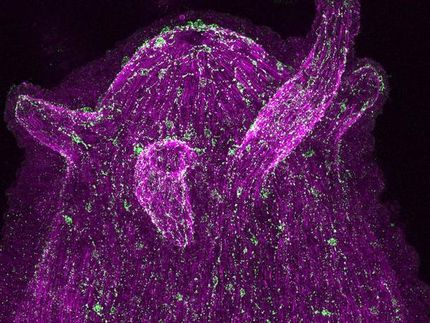Research team develops process for bio-based nylon
Electrons and microbes are the decisive factor in this
Until now, nylon has been produced from petroleum-based raw materials. However, this is quite harmful to the environment because non-renewable fossil resources are used, a great deal of energy is required, and climate-damaging nitrous oxide is emitted during production. A research team from the Helmholtz Centre for Environmental Research (UFZ) and the Leipzig University has now developed a process that can produce adipic acid, one of two building blocks of nylon, from phenol through electrochemical synthesis and the use of microorganisms. The team also showed that phenol can be replaced by waste materials from the wood industry. This could then be used to produce bio-based nylon. The research work was published in Green Chemistry.
In T-shirts, stockings, shirts, and ropes - or as a component of parachutes and car tyres - polyamides are used everywhere as synthetic fibres. At the end of the 1930s, the name Nylon was coined for such synthetic polyamides. Nylon-6 and Nylon-6.6 are two polyamides that account for around 95% of the global nylon market. Until now, they have been produced from fossil-based raw materials. However, this petrochemical process is harmful to the environment because it emits around 10% of the climate-damaging nitrous oxide (laughing gas) worldwide and requires a great deal of energy. "Our goal is to make the entire nylon production chain environmentally friendly. This is possible if we access bio-based waste as feedstock and make the synthesis process sustainable", says Dr Falk Harnisch, head of the Electrobiotechnology working group at the Helmholtz Centre for Environmental Research (UFZ).
The Leipzig researchers led by Falk Harnisch and Dr Rohan Karande (University of Leipzig/Research and Transfer Center for bioactive Matter b-ACTmatter) have described how this can be achieved in an article published in Green Chemistry. For example, nylon consists of about 50% adipic acid, which has so far been industrially extracted from petroleum. In a first step, phenol is converted to cyclohexanol, which is then converted to adipic acid. This energy-intensive process requires high temperatures, high gas pressure, and a large amount of organic solvents. It also releases a lot of nitrous oxide and carbon dioxide. The researchers have now developed a process in which they can convert phenol into cyclohexanol using an electrochemical process. "The chemical transformation behind it is the same as in the established processes. However, electrochemical synthesis replaces the hydrogen gas with electric energy which takes place in an aqueous solution and requires only ambient pressure and temperature", explains Harnisch. For this reaction to run as quickly and efficiently as possible, a suitable catalyst is needed. This would maximise the yield of electrons needed for the reaction and the efficiency of the conversion of phenol to cyclohexanol. In laboratory experiments, the best yields (almost 70% electrons and just over 70% cyclohexanol) were shown with a carbon-based rhodium catalyst. "The relatively short reaction time, the efficient yield, and the effective use of energy as well as synergies with the biological system make this process attractive for a combined production of adipic acid", says Dr Micjel Chávez Morejón, UFZ-chemist and first author of the study. In earlier research, two other UFZ working groups led by Dr Katja Bühler and Dr Bruno Bühler discovered how the bacterium Pseudomonas taiwanensis can convert cyclohexanol into adipic acid in a second step. "Until now, it had not been possible to microbially convert phenol to cyclohexanol. We have closed this gap with the electrochemical reaction.", says Dr Rohan Karande, who is now continuing this work in cooperation with the UFZ at the University of Leipzig.
The Leipzig researchers were able to close yet another gap in environmentally friendly nylon production by developing an alternative for phenol produced from fossil-based raw materials. To do this, they used monomers such as syringol, catechol, and guaiacol, all of which are produced as a degradation product of lignin - a waste product of the wood industry. "For these model substances, we have been able to show that together we can go all the way to adipic acid.", says Harnisch. Rohan Karande adds: "Around 4.5 million tonnes of adipic acid are produced worldwide. If we were to use waste products from the wood industry for this, it would have a considerable effect on the world market.".
However, there is still a long way to go before lignin-based nylon is ready for the market. For example, the scientists have so far achieved a yield of 57% for the 22-hour overall process (i.e. from the monomers from lignin residues by means of microbial and electrochemical reaction steps to adipic acid). "This a very good yield", says Micjel Chávez Morejón. The results are still based on laboratory tests on a millilitre scale. The prerequisites for scaling up the process are to be created in the next two years. This technology transfer requires not only a better understanding of the entire process but also, among other things, the use of real lignin mixtures instead of model mixtures (as has been the case so far) and the improvement of the electrochemical reactors. Harnisch and Karande agree: "The process for the lignin-based nylon exemplifies the great potential of electrochemical-microbial processes because an optimal process chain can be set up through the intelligent way in which various components are combined".























































